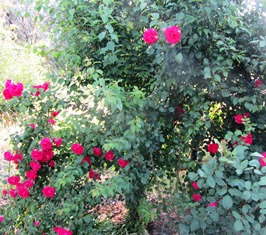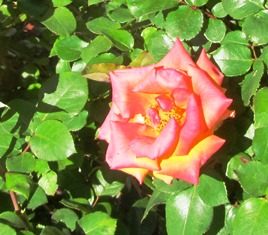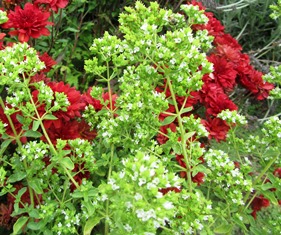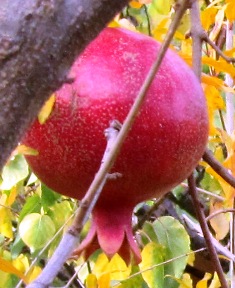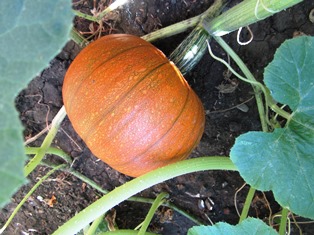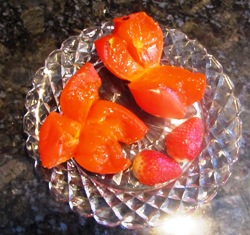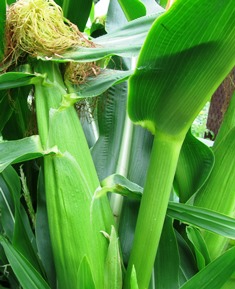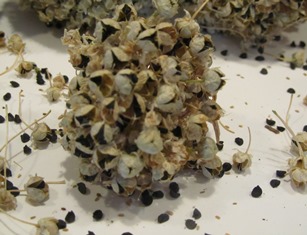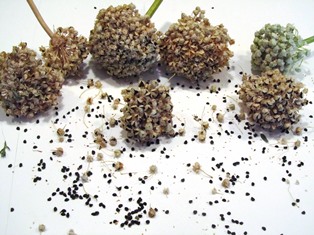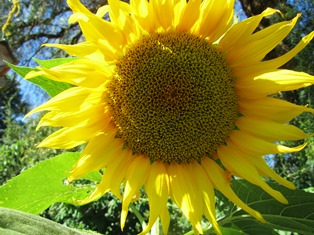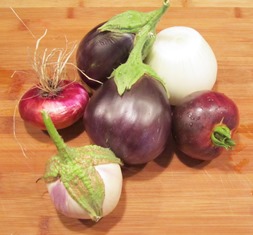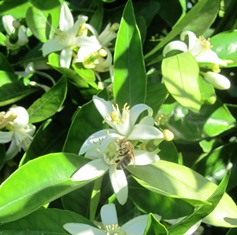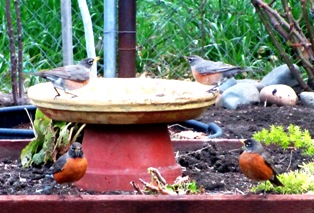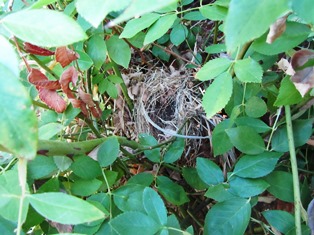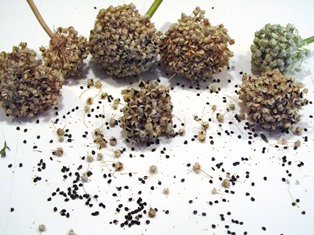Archive for the 'Plants and Trees' Category
The Narrative of the Rose in My Life
If you could be any flower, which one would you be? My choice would be a rose–not only for its exquisite beauty, intense color, and sweet scent but for its incredible ability to regenerate and for its symbolism in love, war, beauty, and politics–universal experiences that individually or collectively affects our lives . . . or, for the purpose of this musing, my life.
It might have been the Chinese who first cultivated the rose, nearly 5,000 years ago, but there is fossil evidence that the wild rose is far older–at least 35 million years old. Now that’s what I call “staying power.” The rose is a beautiful species, some might say delicate, but I wouldn’t be one of them. The rose regenerates, endures, and thrives. I want to be like that–always–if not in body, at least in spirit.
My fondness for roses surely began when I was a small child living on a farm where roses formed wild hedges or spilled over covered bridges on lovely and lonely dirt roads in rural Missouri that led to farms and country cemeteries and fishing holes.
Every year in May, my Scots-Irish grandmother and mother would cut branches of roses to put into glass canning jars of water, festooned in ribbon or pieces of quilting gingham. With me in hand, they would carry the rose bouquets to graves throughout the county where their loved ones were buried. I watched, not entirely understanding why everyone wasn’t buried in the same patch of ground and whether or not the spirits of the dead would enjoy the roses.
My junior prom was all about yellow roses. The pattern covered the gown my mother and her new husband could scarcely afford and filled the corsage my date brought . . . along with a promise that he would be return and take me to the dance. He didn’t. As it turns out, he took someone else, apparently believing I would be satisfied with roses.
Although I still associate the yellow rose with that disappointment, I am grateful that my love for them has endured (real love always does) while my infatuation with that jerk quickly ended.
While I studied the War of the Roses in my world history book, linkage between the rose and politics came about for me at a garden party years ago for California’s lieutenant governor at the home of a wealthy patron in Hillsborough. As I recall, I was more interested in the variety of roses growing on that vast estate than what was being said in threads of conversations going on around me.
Pink roses on the front porch next to my bedroom were bursting into bloom the spring my brother left for Vietnam, dressed proudly in his marine uniform. The sweet spice-laden scent of their blossoms wafted into my room each night as I said prayers for his safe return.
Years later after being wounded and shipped home, he and his wife attended my wedding. The dinner table was lavishly adorned with red roses, green fern leaves, and white baby’s breath in vases next to fine china and crystal stem flutes of celebratory champagne. My dress of cream-colored satin and my husband’s ivory-colored silk vest under his dark suit created the perfect foil for the red roses, proclaiming our romantic, passionate, undying love for each other.
Hours before my husband died, I massaged his weary legs with rose-geranium oil and prayed for strength. His passing came three weeks after Valentine’s Day. I sprinkled rose petals everywhere in the house in remembrance of his life that had, like the tall, strong canes of a climber, had so intimately intertwined with mine.
I chose Honor, a near-perfect white rose, to plant in remembrance of him, knowing that its pristine blooms and abundant leaves were sustained by roots hidden away in the bosom of the earth. The re-emergence of that rose always reminds me that one’s spirit is nourished by that which is seen and unseen and that the soul is eternal.
After starting life anew on the Henny Penny Farmette, I planted two entire rose gardens and tucked in other rose bushes, including some fifty-year-old wild roses, dug from a friend’s ancestral home.

Strong canes with eye buds can be dipped in rooting hormone and put into the ground to grow a new bush
In one area of the farmette, I’ve planted a single row of white roses commemorating the military service of my great grandfather (who fought the decisive Battle of Pea Ridge in the Civil War), my grandfather (whose wounds in Great War in Europe resulted in his death), my father-in-law who served in the Merchant Marines and World War II (where his ship the Exodus, a.k.a. President Warfield, ran the British blockade of Palestine to rescue 4,500 Jewish refugees), and my son’s father, who would have served our nation had it not been for the heart condition that resulted in his early death.
Some roses I’ve planted, especially those that I’ve started from canes clipped or grafted from other people’s plants, remind me of new life and new beginnings. Somehow, these clippings survive and grow into healthy bushes of roses in many different colors. These roses give me immense pleasure, whether in the garden or in vases in my cottage.
Love and death, wars, and politics will continue in their seemingly endless cycles. Long after I’m gone, members of my family, their children, and grandchildren may forget why certain bushes were planted and in whose names. But perhaps they will remember me as a woman for whom roses symbolized important events in the narrative thread of her life and the plants themselves nourished her spirit.
Plant Culinary Herbs for Yourself and the Honeybees
During my pre-rainstorm walk today around the farmette, I noticed honeybees foraging for nectar in the last blooms of the cosmos, nasturtiums, and rose geraniums.
This is the time of year that the bees search for autumn pollen and find it in the last flowers of a summer garden, but also in the blooms of lavender, heather, thistle, balsam, and eucalyptus.
In the spring, I planted a large pots of culinary herbs on my patio to use in cooking. The mixture of plants included sage, parsley, marjoram, chives, sweet basil, rosemary, English thyme, Greek oregano, Lebanese mint, chocolate mint, lemon bee balm, spearmint, and French tarragon.
If you enjoy using such herbs in autumn and winter soups, teas, or breads, for example, consider planting pots of herbs to grow on the patio or on a shelf in a garden window or on the window sill. The plants will brighten the cooking area on dreary dark days and, with just a snip, add flavor to your culinary creations.
Grow mint in pots if you don’t want it spreading over your yard. The same is true for the Greek oregano and also English thyme and French tarragon–those plants will grow beautifully even though confined in clay pots, old urns, or even half wine barrels.
In early autumn, there is a diminishing amount of nectar (in blooms) available for the bees. This is the known as the nectar gap–when the sources of nectar for the bees are minimal and new sources have not yet appeared. This time of the year to think about planting for yourself and also the honeybees.
Pomegranates and Persimmons Are Ripening Now
The pomegranates are turning from green to a deep red as they should be. It’s the middle of September after all. Some have split open, exposing the red seeds inside the fruits. My neighbor says it’s because of uneven watering. These trees don’t need much water and, I admit, I’ve been lax about running the hose on them.
The seeds are luscious, bursting with sweet-tart flavors. Eat the seeds raw or toss them into a citrus salad with fresh greens, oranges, sweet grapefruit sections, kiwi slices, tangerine sections, crunchy apple and pear slices, and sugared pecans.
While I wait for tomatoes (yes, an old heirloom variety of tomatoes with lots of vines that ripen late season) and the French pumpkins to ripen, I’ve noticed that the persimmons have turned a bright orange, but are still quite firm to the touch.
I planted hachyia persimmons instead of fuyu simply because I like them better. The fuyu persimmons are like small, flat apples. They are crunchy and perfect in salads. The hachyia variety can be eaten fresh or incorporated into baked goods.
If not completely ripened, the hachiya are tart–mouth-puckeringly so. But when they are ripened to perfection, they become soft and sensual like custard. To me, there’s nothing quite like those fruits.
Hasten the ripening of both fuyu and hachyia persimmons in the kitchen in a paper bag. Always look for bright glossy color and a heavy weight to the fruit when selecting fruit to eat or bake.
The hachyia variety adds a pumpkinlike flavor to bake goods as well as additional moisture. The hachyia has earned the moniker of “the baking persimmon.” Try using them in cakes, puddings, breads, and cookies.
Think of pomegranates and persimmons as early autumns special treats. The pumpkins and apples will follow. Then for us Northern California gardeners, the work starts in earnest for preparing beds for our cool season gardens.
Summer Garden in Review
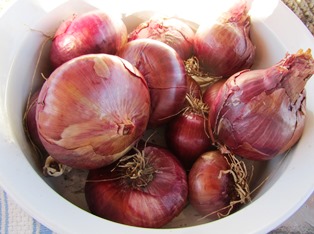
Red onions, grown from sets laid onto prepared beds of soil and barely covered with dirt, produced bulbs all summer
As I prepare and amend planting beds to sow some cool season crops, I am also reviewing my summer garden. I will be the first to admit it was less than a stellar year for my vegetables, except for the peppers, eggplants, summer squash, cherry tomatoes and the sweet French pumpkins for pie, Rouge Vif d’Etampes.
We bought seedlings of heirloom tomatoes and also grew some plants from seed (captured and preserved from last year). The paste tomatoes produced abundantly, but I didn’t get many slicing tomatoes and the cantaloupe and Armenian cucumber plants performed dismally for me. Last summer, those two were star performers in my garden.
The German heirloom Riesentraube (the name means “giant bunch of grapes”) will produce sweet, red 1-ounce fruits, if they ever ripen. The plant’s vines have spread like a wild weed all over the garden and are covered in blooms. The plant is a heavy producer but the fruit is still green. To be fair, I planted this one later than the other heirloom tomatoes, so it may yet surprise me.
Of the blue-black tomatoes we planted, the most notable are Blue Beauty and Indigo Apple. I loved the taste and the thin skin of Blue Beauty but Indigo Apple’s small fruit, despite being described as sunburn and crack resistant, suffered from both in my summer garden.
My patch of sweet summer corn produced lots of ears but quickly became infested with corn aphids that I had difficulty controlling. Finally, I ripped out the whole patch.
We had an abundance of raspberries and strawberries this year. Although we picked strawberries every morning from early May throughout the summer, those strawberries kept on blooming and producing. The blackberries produced lots of vines, but few berries. My blueberry bush went into the compost pile–the soil is too clay and alkaline. I’ll try growing one next year in a wine barrel with acid soil, maybe adding some pine needles, sulfur powder, peat moss, and sawdust mulch.
Our White Genoa fig tree is loaded with ripening figs and the Fuji apple, a few feet away, has branches needing support for the low-hanging, heavy apples. We picked and ate all the sweet summer-ripening Bartlett pears. Now, while we await the fall pears ripening, we’ll keep an eye on the blood oranges from which I hope to make marmalade in late winter when the fruit on the citrus trees ripens.
So, in review, this summer’s garden wasn’t the best. But gardeners, myself included, are eternal optimists, ever dreaming of the next plant, the next season. As English writer and gardener Vita Sackville-West astutely observed, “The most noteworthy thing about gardeners is that they are always optimistic . . . always look forward to doing something better than they have ever done before.”
Growing Onions from Seed
This afternoon, I harvested a basketful of onions (mostly red ones as I planted more of those in April than the yellow ones I use for soup). Red onions taste great in salads or sauteed with garlic and cooked into a sofrito that is added to beans.
I planted the onions in April in planter boxes that my husband built last year (four feet by six feet). This year, I put out sets. But since I’ve harvested seed this summer from the onions I grew from those sets, I will grow next year’s crop from the seed, starting them in seed flats in the kitchen in February.
Here’s how to grow onions from seed.
1. Sow the onion seeds about 1 inch deep in seed flats with seed starting mix.
2. Keep the soil moist and warm until the seeds germinate (about a 10 days to 2 weeks).
3. Keep the young onion shoots moist and warm as they grow.
4. In April or May after the ground outside has warmed sufficiently, replant the seedlings two to a hole about 4 to 6 inches apart in fertile, well-drained soil. (I lay my onion sets on the soil and cover lightly. They are shallow rooted. Do not plant too deep.
5. Water and remove weeds regularly.
6. Harvest onions in midsummer. Let dry in a dark, cool place.
Giant Sunflowers Are Fun for Kids and Easy to Grow
Today, I harvested the largest sunflower in my garden. The 119-inch stem (almost 10 feet) had bent over from the weight of the 15-inch seed head.
The seeds of this annual were already drying and starting to drop from the head. Since I want to harvest and store them, I don’t want to risk new plants emerging from where the seeds have drop onto soil. And I don’t want the squirrels to get the seeds before I’ve saved some.
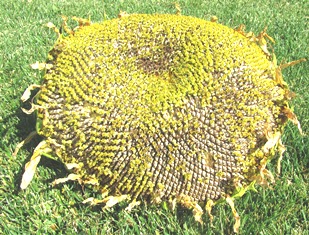
Giant sunflower head, newly harvested, covered with florets that will dry and fall off or can be brushed off to expose seeds
The sunflower I grew emerged from a single stalk that bore only one head with sunny yellow-petaled face. I planted it from seed I saved last year from the parent. If you want a row of giant plants, you’ll need to space them about 20 inches apart.
Kids love these giants when they are trained to grow in fairy rings, fortlike squares, or as tee-pees. The plants are much appreciated by the honeybees, squirrels, and songbirds. Best of all, the stalks can go into the compost pile when the growing season is over.
Our farmette soil is clay. In the area where I planted these sunflowers, I amended the soil with chicken manure and peat. The seedd went in about 1 inch deep and five to six inches apart. Last year, we grew the sunflowers in a circle, but this year we have a row at the back of the property in front of a fence.
Once the seeds are planted, a thorough watering will help them germinate within about a week. Keep them moist until they germinate, then water on a regular basis. I feed them once during the growing cycle with a cup of fish emulsion diluted in a five-gallon bucket of water. Otherwise they aren’t too fussy about soil and can even withstand some drought conditions.
Find heirloom organic seed that is non-GMO at any of the following seed companies:
Baker Creek Heirloom Seeds at http://www.rareseeds.com/mammoth-grey-sunflower/
Victory Seeds at http://www.victoryseeds.com/helianthus_annuus_giant.html
High Mowing Organic Seed at http://www.highmowingseeds.com/organic-seeds-mammoth-sunflower.html
Bountiful Gardens at http://www.bountifulgardens.org/products.asp?dept=70
All Good Things Organic or AGTO Seeds at http://www.agtoseeds.com/products/organic-russian-mammoth-sunflower-seed
Could the Weird Weather Be Affecting Our Crops?
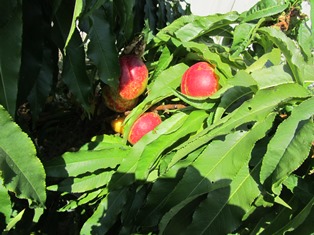
Nectarines are ripening but the tree recently developed peach leaf curl, noticeable in the top right leaves
Since the beginning of the agrarian age, farmers have understood that weather affects crops. To say the weather this year–at least in Northern California–has been weird is an understatement. I can’t help thinking it’s impacting my garden.
In the last three weeks, my healthy nectarine trees developed that dreaded fungal peach leaf curl, despite the prescribe spraying throughout the dormant season with horticultural oil. I’ve got tomato vines spreading everywhere with few tomatoes. The corn developed such a terrible infestation of corn aphids that I pulled out all the corn and fed it to the chickens.
I’m not blaming the weather for my all garden woes, but it’s got to be a factor in what my neighbors and I are witnessing in our gardens and orchards with regard to less bountiful crops.
We have to water because the soil is so dry it’s cracking open. We have to stay on top of pest infestations as we all grow organic and the bees travel through all of our backyards and up to five miles or so. We share our produce and stories of what’s happening in our gardens so we can deal with the problems.
We had very little rain during our rainy season and now local reservoirs are low. For the last three days, the Bay Area has had over 11,000 dry lightning strikes (putting fire departments on high alert), temperatures inching toward triple digits, and high particulate in the air because of all the wildfires burning in our state and elsewhere in the West.
I heard a recent newscaster using that dreaded word “drought” and lamenting about the low level of water currently available for farmers to use for their crops and orchards, especially in the California’s Central Valley, an area considered an important “bread basket” of the United States. The good news is that those farmers will be winding down their water usage as fall approaches and crops are harvested.
As the weather goes, so do the crops–something farmers and gardeners have always understood. My garden woes likely have a lot to do with the head gardener–that’s me. But I’ve been gardening here for four years and this year’s garden has been the least bountiful. While there are many factors to evaluate, the weird weather has to be considered.
Edible Flowers Add Flavor and A Flourish
Picture a red nasturtium or peppery-tasting marigold displayed around a mound of lemony-yellow butter. Or, imagine the beauty of a handful of sugared purple violets or red rose petals, sans the sour petal base, crowning an iced picnic cake.
During bygone eras when the Romans ruled the world or Queen Victoria reigned during the age named for her, flowers weren’t just for bouquets on the table, they formed an integral part of the food that was consumed.
Many flowers and seeds are poisonous, so it is imperative that you correctly identify any flower or plant you plan to eat or use on food. Also, make sure you are not allergic to the plant before integrating its blooms into your diet.
Several edible florals include the blossoms of herbs such as lavender, dill, garlic chive, coriander, basil, bee balm, marjoram, oregano, anise hyssop, winter savory, summer savory, sage, and mint. Also edible are the flowers of certain varieties of pumpkins, squash, cauliflower, scarlet runner bean, radish, sweet garden pea, and fennel.
Consider also the delicate blooms of society garlic, dianthus, pansy, signet marigold, red clover, African marigold, plum, scented geranium (rose, lemon). You can candy the blossoms of apple and crabapple, but the seeds are poisonous.
Some blooms, such as hibiscus (China rose), mint, rose, and chamomile are used to flavor teas. Lemon blossoms will have a slightly bitter taste whereas orange blossoms are sweet but both are lovely floating in crystal bowls of punch.
Research your chosen plant and correctly identify it before using it in any food preparation. See, http://www.extension.iastate.edu/publications/rg302.pdf
Also see, http://www.ext.colostate.edu/pubs/garden/07237.html
Forget the Lawn and Welcome the Robins
One of my favorite ways to relax is birdwatching. And nothing entertains me more than seeing an orange-breasted robin hopping around on the lawn and then halting at a full stop with its head cocked as if listening for an earthworm, as if the worms telegraphed their presence. I mean seriously. But somehow, those robins will find the worms and pull them right out of the ground.
When winter is nearing its close and spring is beginning, the robins are one of the first harbingers of the seasonal transition. In the spring, when other backyard birds are nesting and producing young, the robins are, too. But even though it is possible for them to produce three broods each year, less than half (40 percent) of their nests will hold baby robins.
Of the young robins that hatch, only about a quarter of them will make it to November each year. And as if that weren’t bad enough, of the robins that make it through a full year, only half will survive through a second year. And yet, robins can live to the ripe old age of 14 if it were not for predators and pesticides.
With the odds against these sweet birds’ survival, you’d think most people would not spray the daylights out of their lawns with pesticides and herbicides. These chemicals are toxic to the robins as well as other birds and, of course, the beleaguered honeybee.
Robins find lawns to be wonderful sites for foraging and I often see them searching and snatching the earthworms in the early morning. Later in the day, these cheerful birds seem to prefer fruit and honeysuckle berries. If you don’t see them, you might hear their cheery song crisp and clear, even over urban noise.
During certain times of the year, you might see the robins in greater numbers than at other times, but that doesn’t mean they’ve gone far. They are either resident birds, meaning they stay close to their breeding area or are short-distance migrants. The local conditions (environmental, weather, water and food availability, predator populations, and other factors) dictate the size of the robin population in at any given time in a particular area.
If you love birds as I do, less fussing over your lawn (except to encourage the worms) might mean having having more robins around. Consider ways to establish a healthy ecological balance in your yard and garden to avoid spraying with chemicals that can poison these cheerful fun-to-watch birds.
Harvesting Onions and Saving the Seeds
This year I grew Red Baron (red) onions from tiny sets. I pretty much just laid the thin little onion strings on the ground and sprinkled a little soil over them. I kept them wet and those little strings turned into really fat bulbs of purplish red onion with tall green stalks.
However, when the plant shot up some stalks that were two to three feet in height and sprouted a globe type bloom, I wasn’t sure what to do.Well, now I realize that those globes hold tiny black seeds that will turn into my next crop of onions.
When the bulbs started to turn a little dry, I clipped them and let them dry a bit more on my patio table. Then I laid them onto some white poster board and shook them vigorously to release the tiny black seeds (about the size of mustard seeds).
I put the seeds into a white paper envelope and then labeled the envelope with the name of the onion and the date the seeds were harvested. I can’t wait now until fall when I can sow the seeds into flats and then plant the new sets.
I got a lot of onions this year that I used in soups and salads. I can only hope that next year’s spring crop will be as bountiful.
 Facebook
Facebook Goodreads
Goodreads LinkedIn
LinkedIn Meera Lester
Meera Lester Twitter
Twitter








